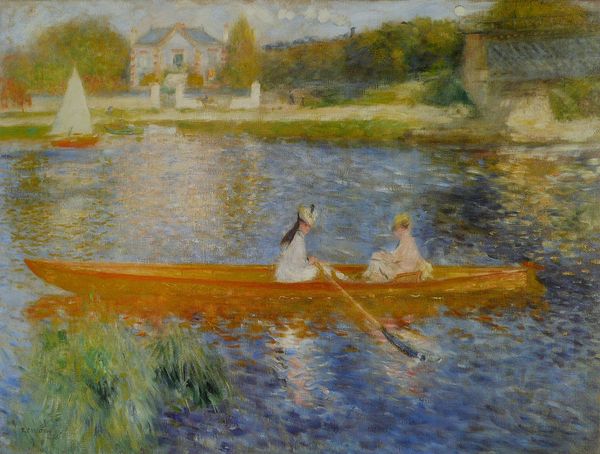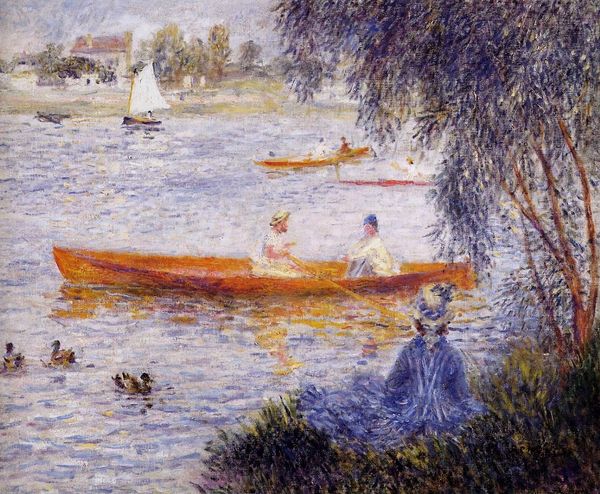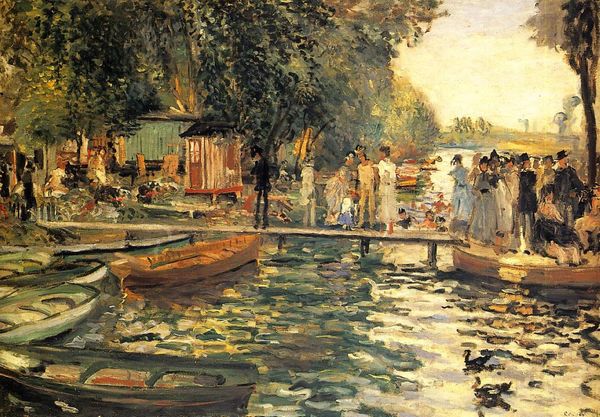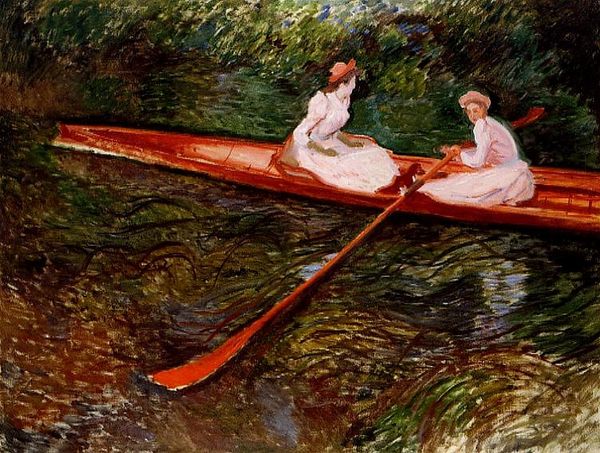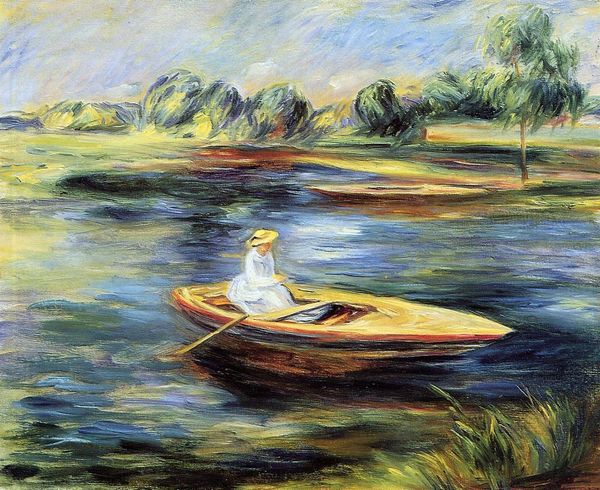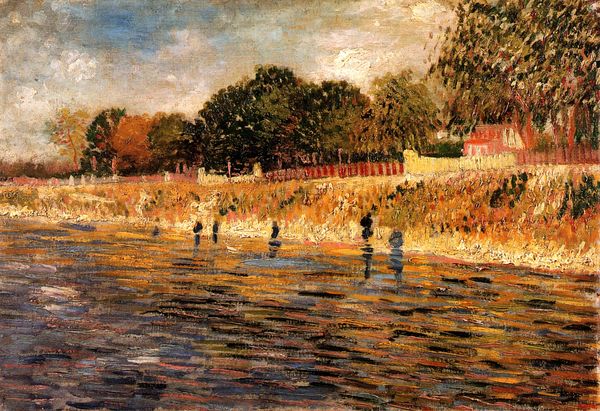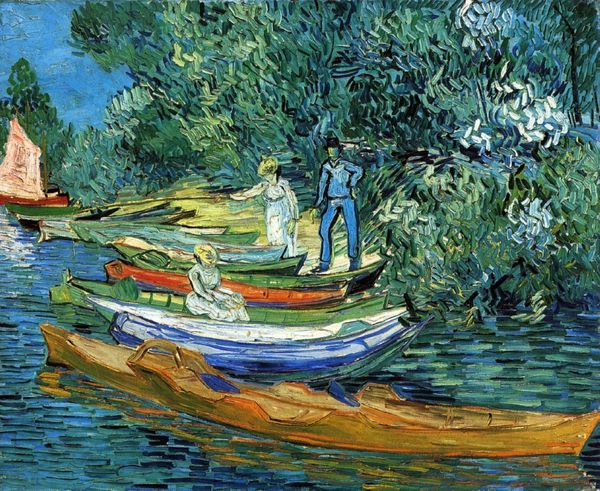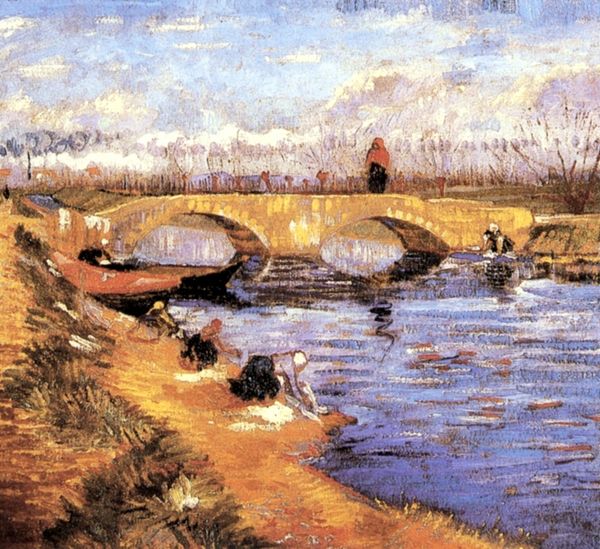
painting, plein-air
#
impressionist
#
boat
#
painting
#
impressionism
#
impressionist painting style
#
plein-air
#
landscape
#
impressionist landscape
#
seascape
#
water
#
genre-painting
Copyright: Public domain
Curator: Renoir’s “The Seine at Asnieres,” painted in 1879, captures a slice of Parisian leisure life. Look at that shimmering water. What’s your initial reaction? Editor: It feels… unbalanced. All that activity is crammed into the lower half. The two figures dominate the space but they seem so passive; it suggests to me an inertia of the upper classes disconnected from real labor. Curator: Interesting! Social critique through Impressionism! Renoir frequently depicted the leisure activities of the burgeoning bourgeoisie, reflecting significant societal shifts. Consider the impact of industrialization on leisure time and class dynamics in late 19th-century France. Editor: Right. We must consider how Renoir chose to frame these "leisure" activities. He's offering a romantic vision but is he interrogating the privileges inherent in that very act of leisurely boating? Who has access? Who is excluded? That single rower suggests the women lack even basic skills beyond mere consumption and display. Curator: The loose brushstrokes certainly convey the fluidity of the water and the ephemeral nature of the scene. And that orange skiff contrasts against the blue-greens... There is definitely dynamism here. Editor: But what does it mean? Is it celebrating this freedom or subtly critiquing its artificiality? Perhaps he captures how restrictive gender roles persisted, confining even privileged women to prescribed pastimes, never captains of their own fate, figuratively and literally. The landscape becomes a backdrop, their experience a performance. Curator: So, you’re reading this idyllic river scene as a commentary on social constraints? That tension between apparent freedom and underlying structures of power shapes our understanding. Thank you! Editor: Exactly. And seeing through the artifice can sharpen our critique of modern iterations. Appreciate the technique, but challenge the context.
Comments
No comments
Be the first to comment and join the conversation on the ultimate creative platform.
